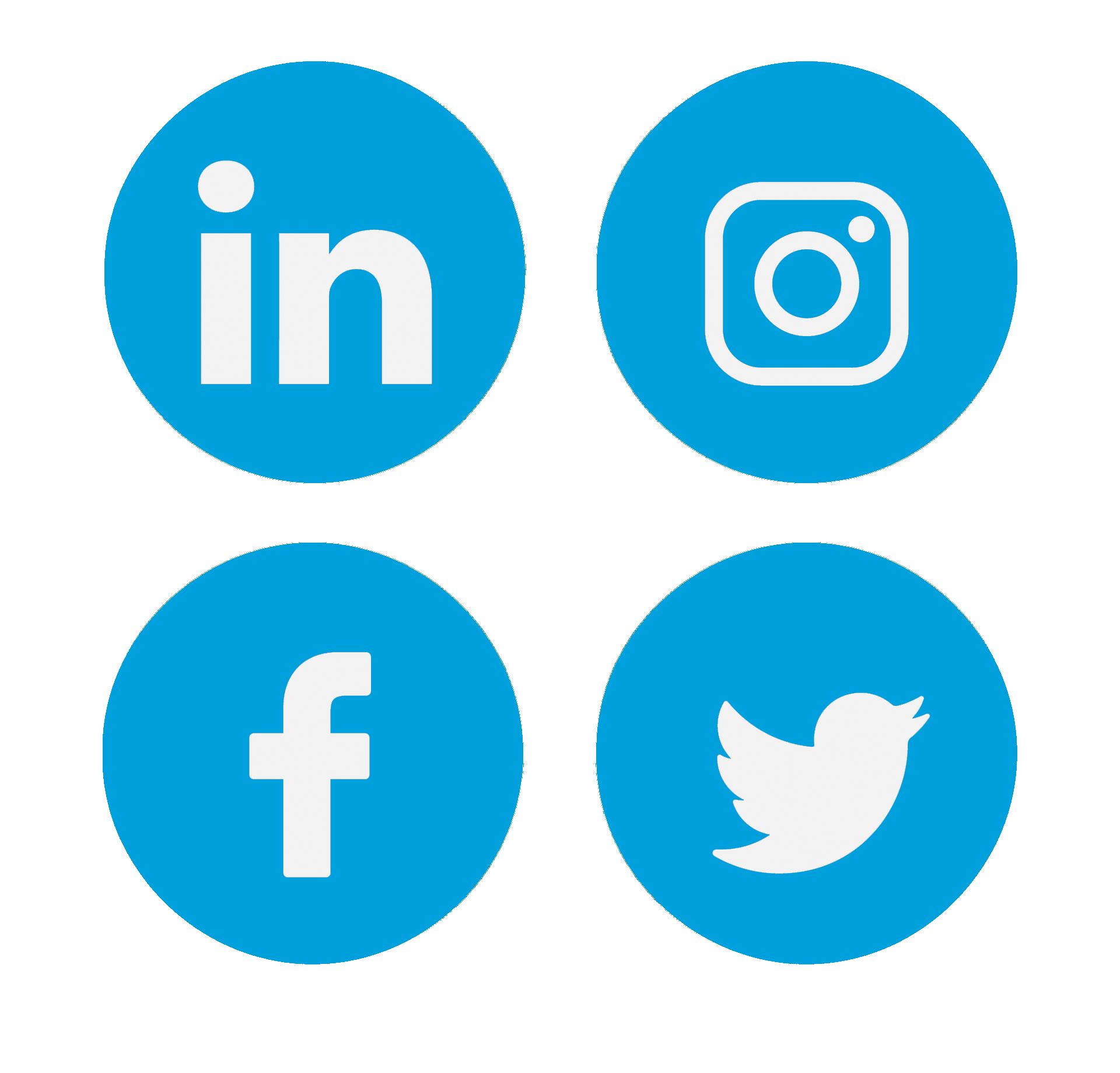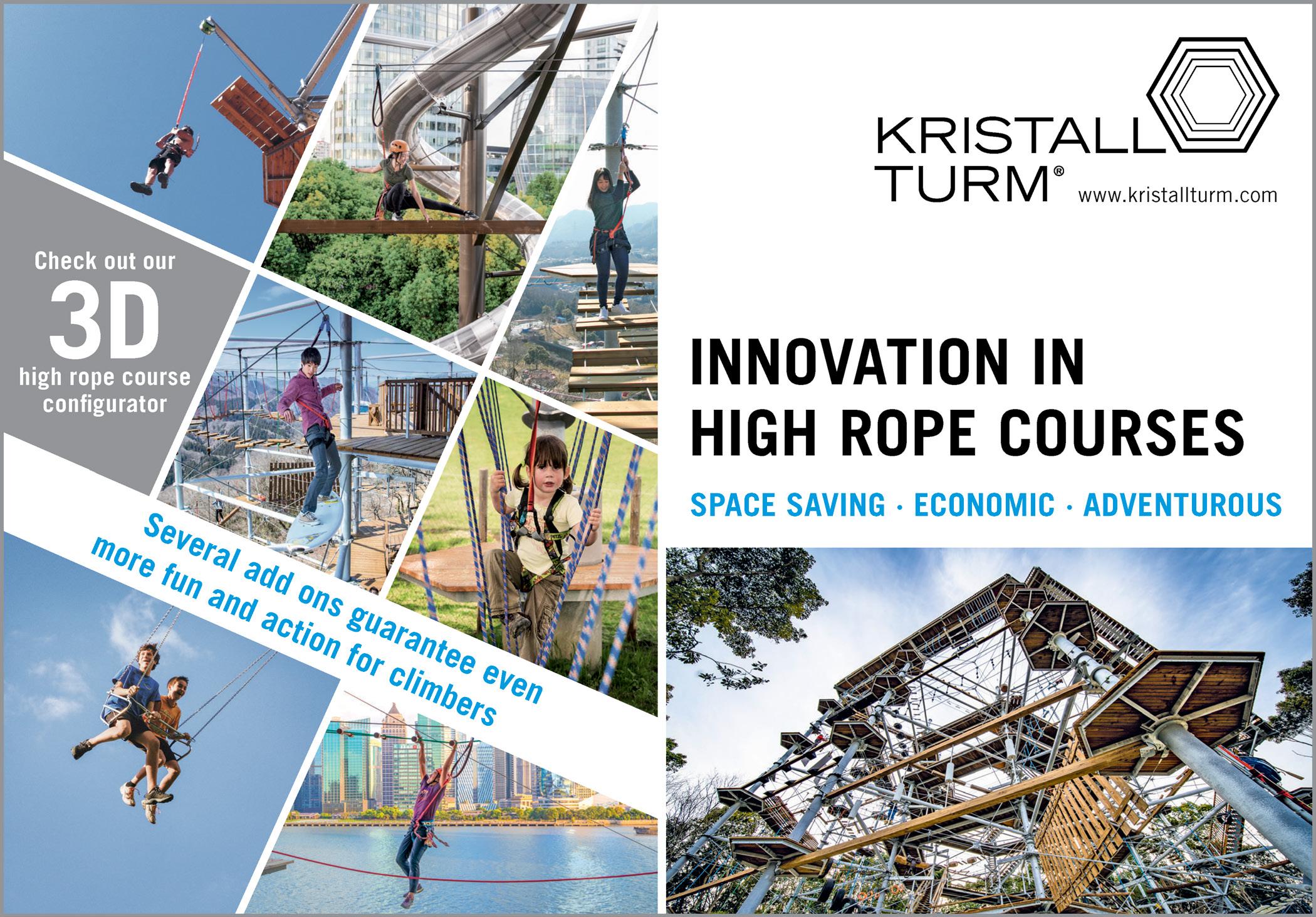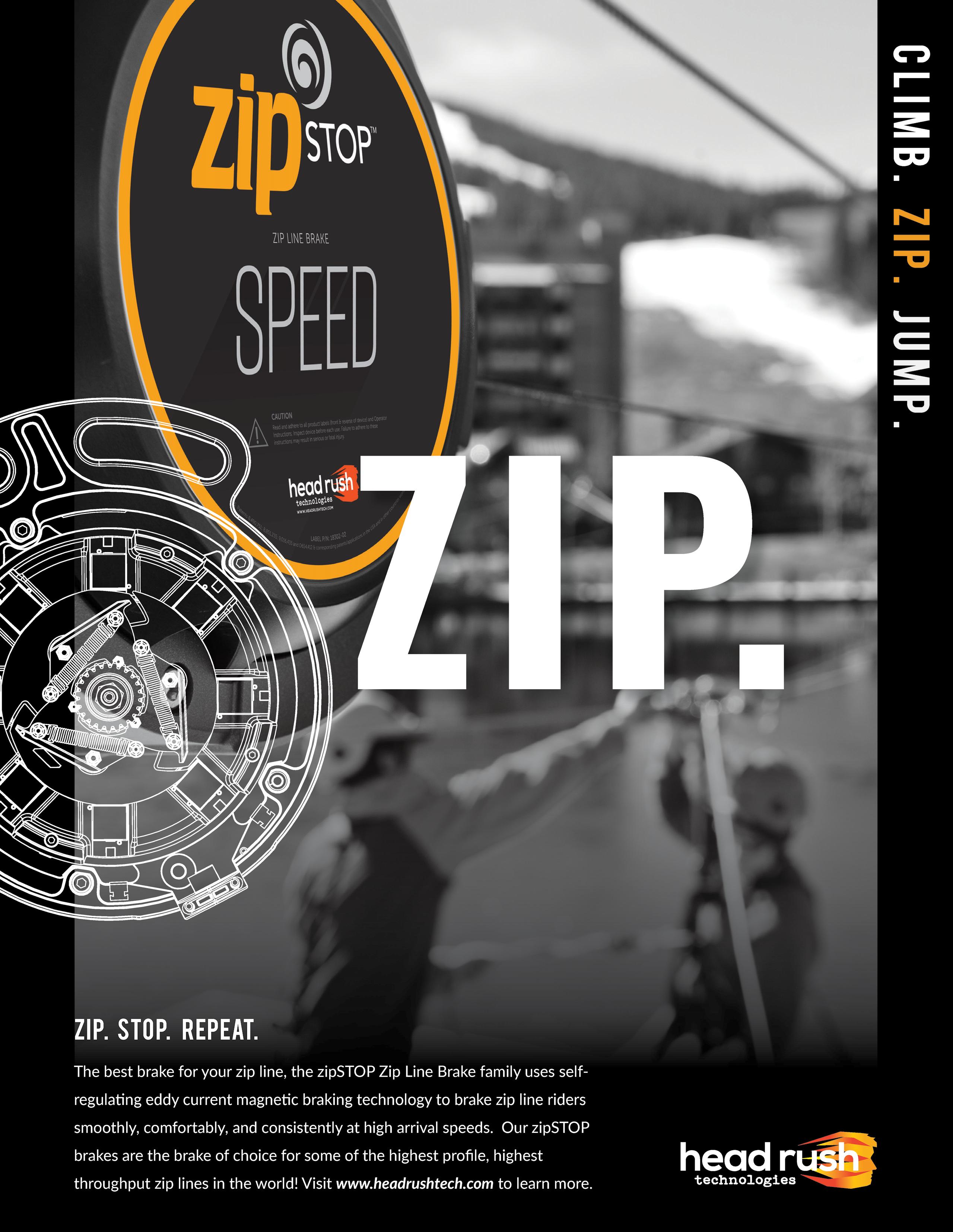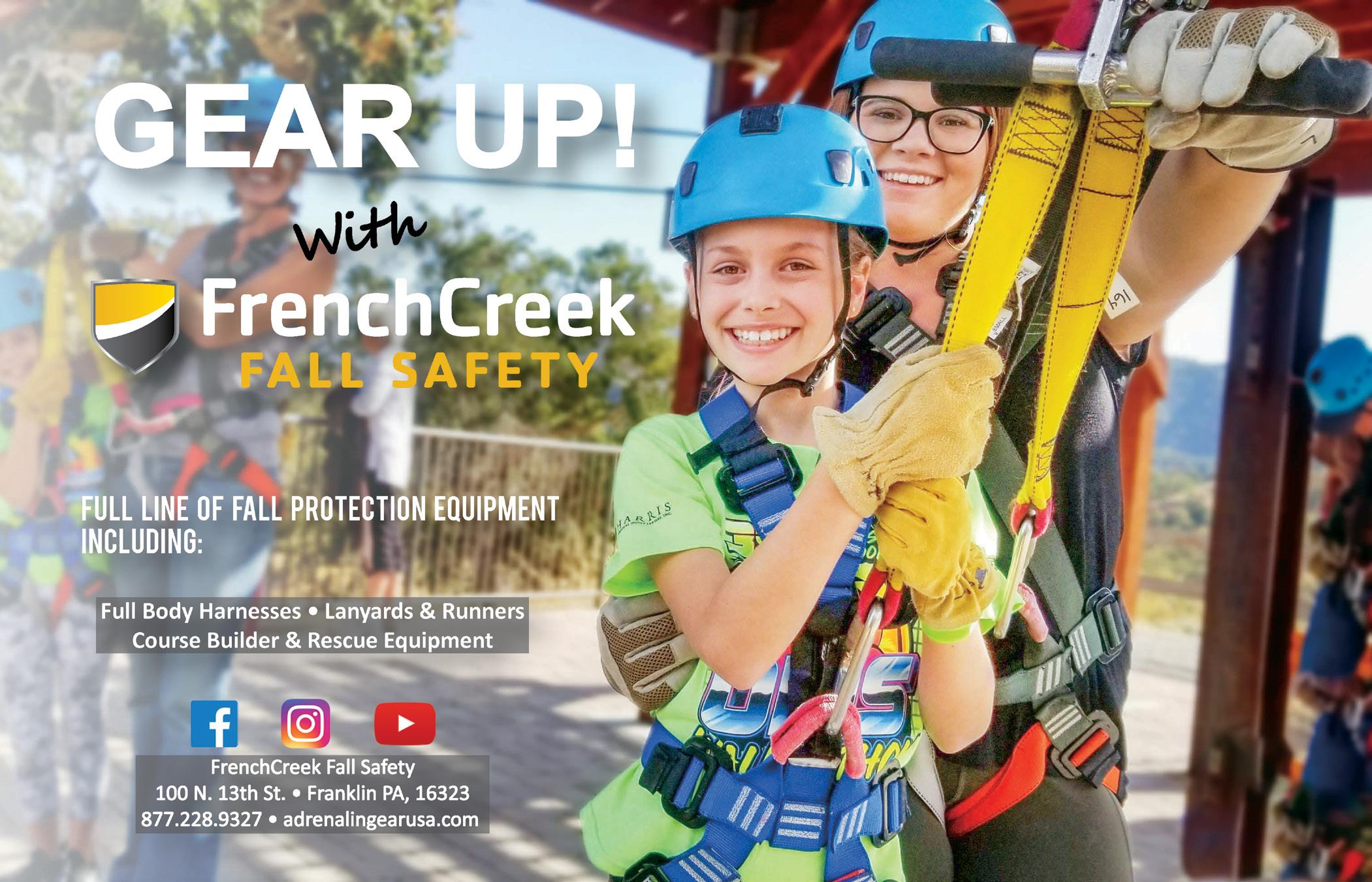
10 minute read
PICK YOUR PLATFORMS
PART II OF III: DIGITAL ADVERTISING
Where do you want your digital audience to see your ads?
Advertisement
BY GREGG BLANCHARD, INNTOPIA
In the last decade, digital advertising has gone from an exclusive channel reserved only for the biggest brands to a long list of self-service platforms available to any advertiser of any size. But advertising isn’t a yes or no question, it’s a skill. You can’t just do advertising—you have to do it right.
We started this series by analyzing the first building block of any campaign: the audience. In part II, we’ll dig into the ad platforms that are available and discuss how effective each is at reaching different segments of the audience. We’ll then share tips and advice from digital advertising experts on how adventure parks should get started creating and going live with their ads.
PLATFORMS
While there are dozens of ad platforms available, we’re going to focus on those that are best matched to adventure parks, with an emphasis on social media advertising.
Keep in mind, you can’t create an audience based on age or location if the ad platform doesn’t know the age or location of the people in its network. The more data a platform has, the more powerful its targeting can be.
Facebook + Instagram
When it comes to data, Facebook—and its 2.4 billion active users—is king. Combined with a self-serve interface, many ad-format options, good support, and the ability to target Instagram’s one billion users as well, it’s little wonder why Facebook is one of the most popular ad platforms in the world. Google + YouTube Google’s main value comes through two ad types. First, Google’s paid search results allow advertisers to bid on keywords and show ads alongside organic search results.
Second is Google’s expansive display network, which consists of millions of websites that display ads alongside their content. When advertisers pay Google to show their ads on websites in the network, the websites receive a cut.
Just like Facebook owns Instagram and offers both through a single ad platform, Google does the same with YouTube. The pair lacks the user data of Facebook and Instagram, but YouTube can be a very strong platform simply because of how effective and affordable video advertising can be.
Twitter does feature a simple, self-serve advertising platform, but lacks in both number of users and data about each user.
While LinkedIn may not have as much data about its users or as many users as Facebook, it does have unique data that other networks do not. The LinkedIn ad platform is fairly easy to use and allows a level of targeting for industries and work titles other platforms can’t achieve.
AUDIENCES ON PLATFORMS
Each of these ad platforms offers some form of intent, demographic, database, and lookalike audience targeting, so we’ll focus on finding the best ad platform for each audience type.
Intent
Google’s search ads take the cake when it comes to intent. It’s hard to beat the ability for a ropes course near Atlanta to get its ad in front of someone searching for “Atlanta ropes courses.” However, those ads can also be very expensive. When it comes to retargeting web visitors who have shown intent through their browsing behavior on your site, Google’s ad network is vast, but Facebook’s 2.4 billion users often provide the largest overlap between its users and your website visitors.
Demographic
Facebook’s expansive data set is the clear winner for demographic targeting. No other network can offer the same combination of targeting based on things like age, location, and interests. However, for certain types of ads, especially those related to group sales, LinkedIn is a good option to consider.
Database
Once again, Facebook’s 2.4 billion users give it a huge advantage when it comes to database targeting, simply because there is a better chance it’ll be able to match the people in your database to the people in its network.
Lookalike
With more guest matches from your database to work with and more data at its disposal to look for people with similar attributes, once again, Facebook is tough to beat.
GETTING STARTED
With a good understanding of both the audience types we may want to target and the ad platforms we can use to reach them, let’s start tying these pieces together.
Choosing an Ad Platform: Facebook is King If you’re starting to lean toward Facebook, you’re not alone. Jackie Calvert, owner of Tahoe-based digital marketing agency Unbound Communications, is a fan. “Facebook, in my experience, is by far the best converting platform for an audience that is not necessarily seeking out adventure parks,” says Calvert.

Rob Prew, co-founder of Cube Rocket, an outdoors-focused digital agency based in Ketchum, Idaho, agrees. “Facebook and Instagram still reign supreme and provide the most bang for the advertising buck,” he says. “For novices, they offer quick and easy ad tools to boost posts or create quick walk-throughbased ads right from your Facebook business page or from the mobile app.”
Digital marketing consultant Adam Buchanan, based in Salt Lake City, Utah, also sees Facebook as a perfect starting point, although he suggests adventure parks first gauge their own social channels and the activity of their competition to decide where to start. “If one of your organic [unpaid] channels or a competitor is performing well on a platform, focus on that first,” Buchanan says. When it came to picking a winner, he agrees that Facebook is still very cost effective if done correctly.
Choosing a Target Audience Our experts all suggest one of two types of audience to begin targeting first: database or demographic. Prew leans toward your database. “The minimum requirement is simply an email address for Facebook audience matching, so you can load email subscribers, e-commerce past purchasers, survey data, and CRM data to build an effective first audience,” he says. your existing visitors,” she says. “Aggregate data and see who is already coming to your adventure park. Then ask, are they repeat visitors? Is there a trend in lapsed visitors?”
Buchanan suggests using a tool called Facebook Audience Insights to get a head start in building an audience based on demographics. “You can add in certain competitors or interests you already know they have, and it will generate complementary terms and targeting parameters to add to your targeting,” he says.
Creating Your First Ad Knowing what to say can be the trickiest part, but Buchanan has a simple rule of thumb for getting started. “Go into social ads with the mindset that your audience isn’t on social media to consume ads—they are there to be entertained and connect with people. Ask yourself, ‘does this ad creative look and feel like it belongs on social media?’”
Buchanan also suggests considering what questions might be holding someone back from moving to the next stage of your marketing funnel, and to create content that answers those questions.
Prew’s advice is similar, but he also suggests that adventure parks will need to avoid common mistakes as much as heed best practices. “There are a lot of things you’ll want to avoid,” he cautions. “For example, you don’t want too much text in an image-based ad. Facebook recommends image ads with less than 20 percent text.” He’s also noticed that many beginners get a little too excited and create more ads than they have time to manage. >> continued
More specifically, Buchanan recommends having no more than three ad sets running at a time on Facebook or any single ad platform.
When it comes to the offer, Calvert suggests combining urgency with a very specific product. “Something like ‘Flash Sale! Families save 40% at ABC Adventure Park when you book in the next 72 hours,’ combined with a headline like,
Common Mistakes
Each digital marketing expert has a few words of wisdom for anyone getting started with digital ads.
Calvert has noticed countless marketers jumping in without deciding first what they’re trying to accomplish. “Is it to increase day pass sales by 20 percent? Increase midweek visitation? Increase general brand awareness?” She points out that your first ad will rarely be a winner, so unless you’re ready to rigorously test and optimize, you may want to think twice before getting into digital advertising.
Prew also suggests asking some hard questions to be sure you are ready to not just set up ads, but to do it right. “What monthly spend do you have to apply toward digital ad placements? Do you have video or image content on hand? Are you currently generating a constant stream of content?” In other words: The more prepared you are, the more successful your digital ads will be.

Outline your goals first, then assess which platforms are best for reaching your audience and targeted goals. Author Gregg Blanchard offers a star rating for how each platform performs with each audience type.


He also points out that while ad tracking may be slightly more advanced to set up, adventure parks absolutely need to have tracking configured on their marketing and e-commerce websites so they can accurately measure the results and see if ads are generating an ROI.
Beyond Facebook
While Facebook may be a great place to start, consider looking at YouTube if you do a lot of video work or LinkedIn for B2B or group sales. Google Search may also be great to explore, depending on the search volume for experiences like the ones you offer. In each case, be sure you have the resources to do both the initial setup and the ongoing monitoring and maintenance before jumping in.
In-House vs. Agency
Digital advertising can be easy to get started with, but very difficult to master. Do you have the time and knowledge to do it all in-house? Or should you work with an agency? Prew is quick to point out that advertising isn’t a “set it and forget it” type of marketing. “Do you have the ability to generate ad copy and graphical image elements? Do you have the capacity to take on learning, creating, placing, and analyzing digital ads in-house?” asks Prew. If not, he suggests getting help from an outside agency.
Buchanan, who has spent 5+ years each as a marketer and a consultant, points out that agencies aren’t being self-serving when they suggest this. “Agencies can actually be cost-effective, because you are just paying a flat fee and don’t have the overhead of having another employee in the office,” he says. “However, it’s nice to have someone in-house who is great at brand voice and can execute quick-turn needs that an agency might be a little slow to execute.”
The balance? He suggests finding an agency that treats itself as an extension of its clients. Whether you commit the time and resources to try to do it in-house or decide to work with an agency, digital advertising is different today than it was a few years ago, and will likely change even more in the coming years. If you tried digital advertising in the past but don’t use it now, it might be worth taking another crack with today’s tools and ad rates. If it’s not working for you now, don’t hesitate to push pause and try again sometime down the road.
THE EVOLUTION CONTINUES
Whether you commit the time and resources to try to do it in-house or decide to work with an agency, digital advertising is different today than it was a few years ago, and will likely change even more in the coming years. If you tried digital advertising in the past but don’t use it now, it might be worth taking another crack with today’s tools and ad rates. If it’s not working for you now, don’t hesitate to push pause and try again sometime down the road.
Digital advertising doesn’t work for everyone, but with the right combination of audience, platform, and advertisement it can be a smart, scalable way to generate revenue for your adventure park.
Gregg Blanchard is vice president of marketing for Inntopia, a CRM and e-commerce provider for the resort and recreation industries.











